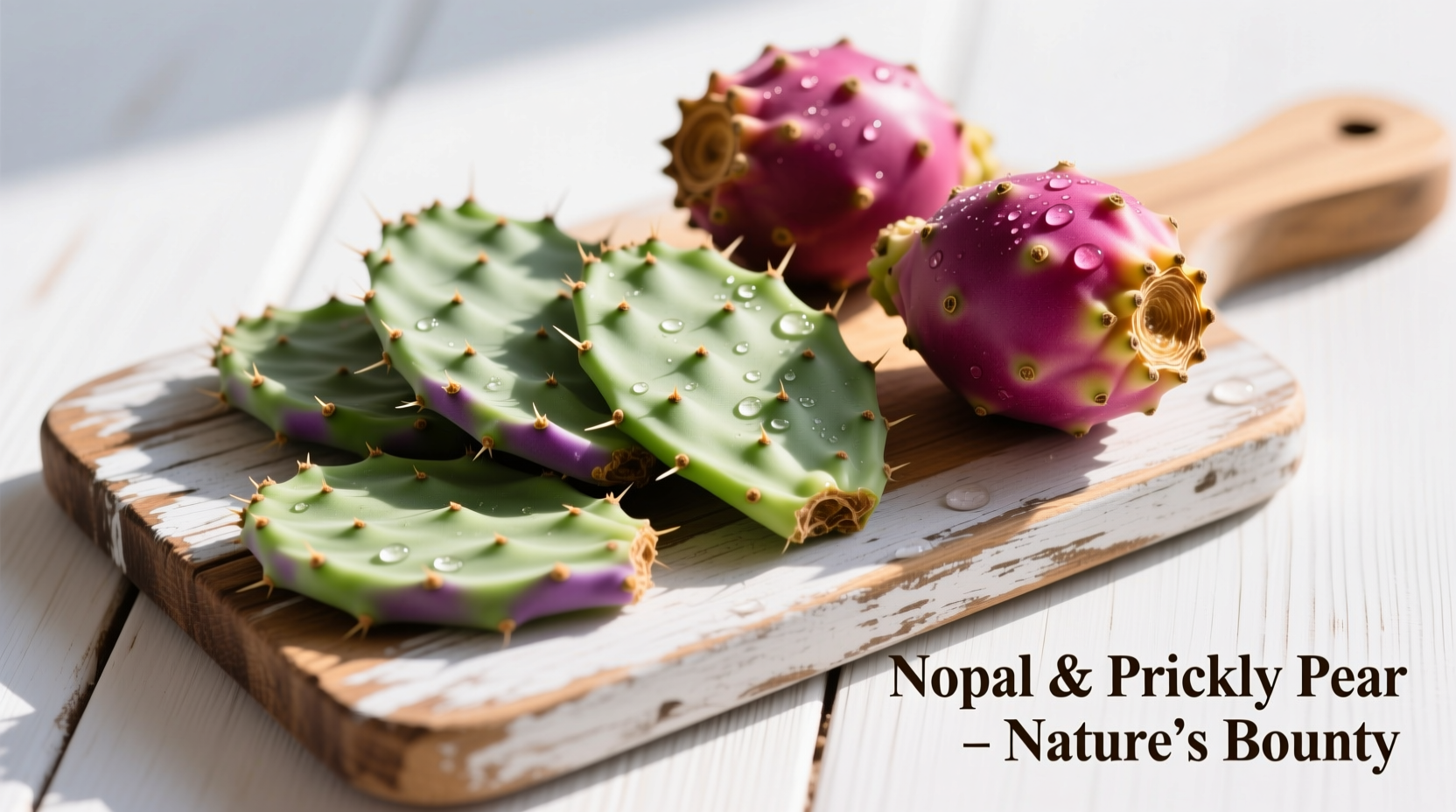Edible cactus, primarily nopales (prickly pear pads) and prickly pear fruit, offers a unique flavor profile: raw nopales taste similar to green beans with a hint of sourness and asparagus-like earthiness, while cooked nopales develop a texture and mild tang reminiscent of green peppers. The sweet prickly pear fruit resembles a blend of watermelon, kiwi, and bubblegum with subtle citrus notes.
Ever wondered what cactus actually tastes like? If you've seen nopales on a menu or spotted prickly pear fruit at the market, you're not alone. Many home cooks and adventurous eaters want to know whether this desert plant delivers culinary delight or disappointing disappointment. Let's cut through the confusion with precise flavor descriptions you can actually use in your kitchen.
Your First Encounter with Cactus Flavor
When you bite into properly prepared nopales (the flat pads of the prickly pear cactus), you'll notice an initial vegetal freshness similar to steamed green beans. That first crunch gives way to a tender texture comparable to cooked bell peppers, with a subtle tartness that reminds some tasters of raw artichoke hearts. The magic happens when heat transforms these pads - cooking mellows their natural acidity while enhancing their earthy backbone.
Prickly pear fruit (tunas) presents a completely different experience. Slice open this vibrant magenta fruit and you'll discover juicy, seed-speckled flesh that bursts with sweet-tart refreshment. The flavor profile combines watermelon's juiciness, kiwi's tropical brightness, and a whisper of bubblegum sweetness that makes it uniquely memorable.
| Cactus Variety | Raw Flavor Profile | Cooked Transformation | Texture Characteristics |
|---|---|---|---|
| Nopales (pads) | Green bean-like with lemony tang | Earthy notes intensify, acidity mellows | Firm yet tender, slightly mucilaginous |
| Prickly pear fruit | Sweet watermelon with kiwi brightness | Syrupy depth develops when cooked | Juicy with edible seeds, gelatinous flesh |
| Dragon fruit | Mild kiwi-strawberry blend | Flavor remains delicate when cooked | Crisp, seed-speckled texture |
Transforming Cactus in Your Kitchen
Understanding what cactus tastes like requires knowing how preparation affects its flavor. Raw nopales contain natural mucilage that gives them a slightly slippery texture many find off-putting. Traditional Mexican preparation solves this through grilling or boiling - techniques that reduce sliminess while concentrating flavor. When sliced thin and cooked quickly, nopales develop a clean, vegetal taste perfect for salads. Slow-cooked nopales absorb surrounding flavors beautifully, making them ideal for stews and egg dishes.
Professional chefs like Maya Gonzalez emphasize the importance of proper cleaning: "Removing all spines and glochids (tiny hair-like spines) is non-negotiable for safe preparation. I recommend wearing thick gloves and using a vegetable peeler to ensure complete removal before cooking." This safety step directly impacts your tasting experience - improperly cleaned cactus can cause mouth irritation that masks its true flavor.

What Affects Cactus Flavor?
Several factors determine what cactus tastes like in your dish:
- Harvest timing: Younger nopales (smaller than your hand) offer the most tender texture and mildest flavor
- Preparation method: Grilling adds smoky notes while boiling preserves brighter acidity
- Regional varieties: Desert-grown cactus develops more pronounced earthiness than irrigated farm varieties
- Seasonal availability: Prickly pear fruit reaches peak sweetness in late summer through early fall
The USDA National Nutrient Database confirms that nopales' nutritional profile contributes to their flavor characteristics, with high water content (95%) creating that refreshing quality and natural malic acid providing their distinctive tartness. This scientific perspective helps explain why nopales pair so well with bold flavors like lime, garlic, and roasted peppers - they provide a clean canvas that balances rich ingredients.
Common Flavor Pairings That Work
Knowing what cactus tastes like opens up exciting culinary possibilities. These proven combinations elevate its natural flavor:
- Mexican classics: Nopales with scrambled eggs, fresh tomatoes, and serrano peppers creates a balanced flavor profile where the cactus' mild tartness cuts through the richness
- Modern twists: Grilled nopales with citrus vinaigrette and avocado highlights the vegetable's crisp texture
- Sweet applications: Prickly pear fruit shines in sorbets and cocktails where its natural sweetness requires minimal added sugar
Many first-time tasters make the mistake of expecting intense flavor. "Nopales are culinary team players, not solo performers," explains Gonzalez. "Their magic lies in how they absorb and balance other flavors while contributing their unique texture." This explains why they've been kitchen staples throughout Mexico and the American Southwest for centuries.
Where to Find Quality Cactus
For authentic what does cactus taste like experience, seek out:
- Latin American markets (best for fresh nopales with spines still attached)
- Specialty grocery stores (look for pre-cleaned, packaged nopales in refrigerated section)
- Farmers markets during summer months (peak season for prickly pear fruit)
- Canned or bottled varieties (acceptable for emergency cooking, but lacks fresh flavor)
When selecting fresh nopales, choose pads that feel firm and look vibrant green without dark spots. The younger the pad, the less mucilage it contains, resulting in better texture after cooking. For prickly pear fruit, deep magenta color indicates peak ripeness and maximum sweetness.
Practical Tips for First-Time Cactus Cooks
Before you experiment with cactus in your kitchen, keep these practical considerations in mind:
- Always wear kitchen gloves when handling raw nopales to avoid spine irritation
- Cook nopales in stainless steel or cast iron to prevent metallic flavor transfer
- Add acid (lime juice or vinegar) at the end of cooking to preserve vibrant color
- Expect some liquid release during cooking - this is normal and contains valuable flavor
- Start with small portions to gauge your personal taste preference before committing to larger dishes
Understanding what cactus tastes like transforms it from an exotic curiosity into a versatile kitchen ingredient. Whether you're exploring traditional Mexican cuisine or seeking new vegetarian options, nopales and prickly pear offer distinctive flavors that deserve a place in your culinary repertoire. The key is approaching them with proper preparation knowledge and realistic flavor expectations - then letting their subtle charm surprise you.











 浙公网安备
33010002000092号
浙公网安备
33010002000092号 浙B2-20120091-4
浙B2-20120091-4